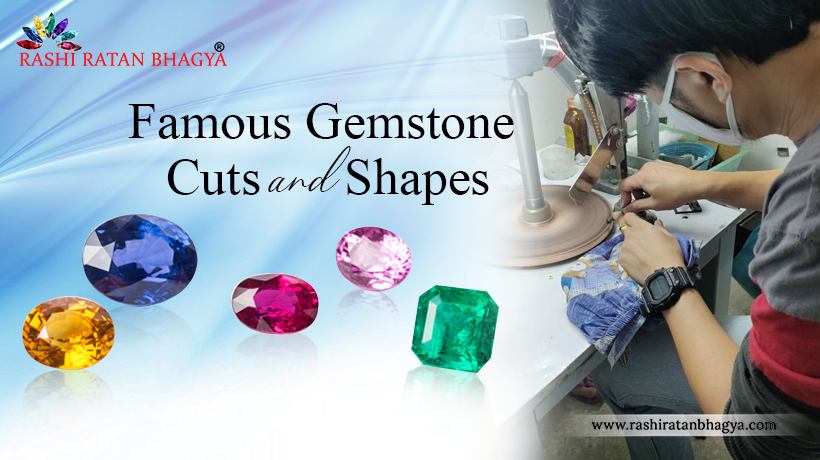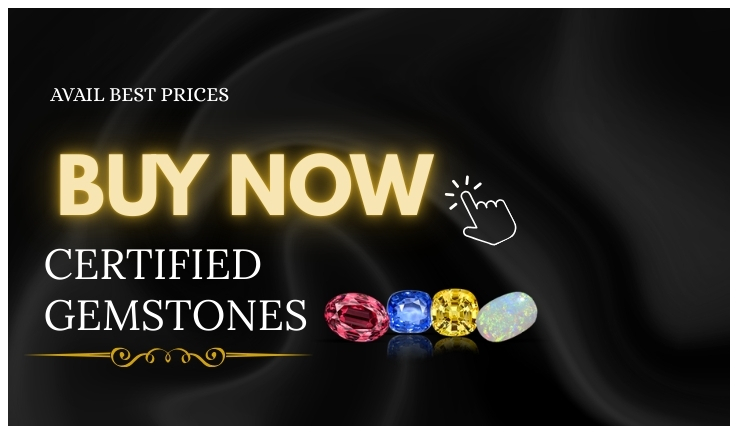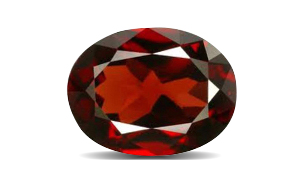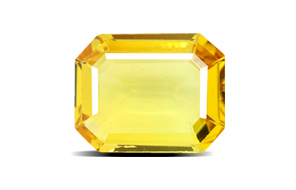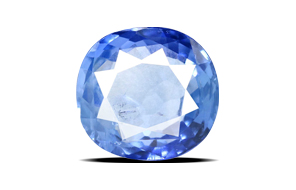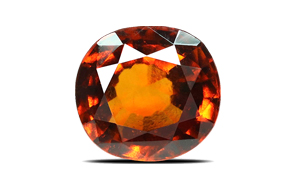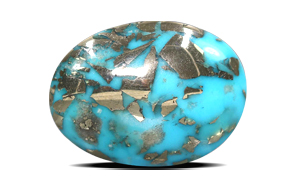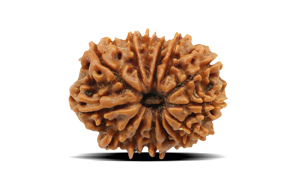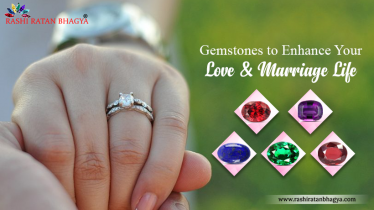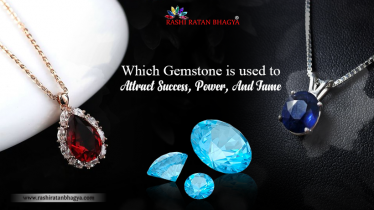How would you feel if you spent a lot of money on a magnificent diamond that others mistake for a flea market find?
Isn't it going to ruin you? A semi-precious stone with superb cutting can outperform a precious stone with bad cutting. This emphasizes the significance of Gemstone Cuts, which may either damage or brighten your gemstone. The workmanship behind Gemstone Shapes and cuts is important in determining the price of the gem.
In this Blog, we will discuss the top gemstone cuts and shapes that bring out the enchantment of valuable stones.
What are gemstone cuts?
When a gemstone is originally retrieved, it must go through several processes before it can be implanted in your jewelry. To get to this point, cleaning, polishing, and, of course, cutting and shaping are required. The gem cut is determined by how you cut a gem to give it some form of shape. There are many other types of gem cuts, which we'll go over later, but a few examples are round, oval, and square, among many more.
These gem cutting may appear simple at first glance. Each cut, however, includes subtle features that are impossible to achieve without the necessary training and expertise. You must learn how to use certain tools since only they can complete the task. In addition, complicated patterns must be cut to perfection to get the required gem cut. A square gem cut, for example, is more than just cutting out four straight lines. To get the desired outcomes, it must be leveled and trimmed in other locations.
Why is it important to select the proper and best gemstone cut?
To see why the right gem cut must be chosen, we must first comprehend what the gem cut performs. For starters, conventional gem cutting simplifies jewelry manufacture. If they are precisely cut, they may be readily fitted into your selected piece of jewelry without the need for any metal changes. Alterations frequently result in metal loss and more time, which may result in more expensive jewelry.
The cut also plays an important role in bringing out the color, reflection, and genuine brilliance of a stone. You've probably observed that diamonds are frequently inclined and have several slanting cuts. They are never balanced. It is purposefully formed in this manner to reflect light more attractively and glitter as desired. Remember that even a simple or incorrect cut can impair a gem's luster or purity.
Although the style of the cut depends on personal desire and the type of jewelry, it is recommended to stick to your jeweler's advice and avoid experimenting with unusual custom cuts. This might diminish a gem's genuine brilliance and leave you with something you don't want to wear.
List of Most Popular Gemstone Shapes and Cuts
Here we mention some of the most important or popular gemstones list of cuts and shapes and explain them one by one:-
- Round Brilliant Cut
- Emerald Cut
- Marquise-Cut
- Princess Cut
- Briolette Cut
- Fine Step-Cut
- Laser-Cut
Round Brilliant Cut of Gemstone
A Round Brilliant cut is a timeless classic in gem cutting. The cut evolved in the twentieth century and is distinguished by the strategic positioning of 58 facets that enhance the dispersion of light in the gemstone, causing it to dazzle as it should.
This gemstone cut arose from artists' requirement to enhance a diamond's radiance. The work resulted in a cut that let light enter and bounce off with dazzling brightness, mirroring the natural beauty of the stone.
The Round Brilliant Gemstone Cut revolutionized the industry and became synonymous with fine craftsmanship. Originally reserved for diamonds, this cut is now utilized for various valuable stones such as sapphires and rubies.
Emerald Stone Cut
The cut of an emerald differs from the cutting of other gemstones. It is rectangular with rounded corners. The emphasis is on displaying the "Hall of Mirrors" effect, which emphasizes the purity of the diamond rather than the glitter.
The cut was initially limited to Emeralds, as the name suggests. Because the gemstone is so delicate, lapidaries rounded the edges to prevent breaking. Diamonds, rubies, aquamarines, and sapphires are all cut in this manner.
This gemstone form is ideal for those who like clean and regal gemstones over dazzling ones who appreciate discreet luxury.
Marquise-Cut
The Marquise Cut, which first appeared in the 18th century, was inspired by the lips of the Marquise de Pompadour. This cut creates the illusion of more carat weight by having an elongated form with pointy ends.
The Marquise Cut gained popularity throughout the Victorian era and has retained its attractiveness, particularly for individuals looking for a distinctive and eye-catching style. This cut, which is ideal for diamonds, sapphires, and garnets, continues to exude regal magnificence and exquisite taste.
Princess Cut
The Princess Cut, which debuted in the 1960s, is the second greatest gemstone cut after the round brilliant. It is increasingly typical to see engagement rings in this location. If you want a modern mood with classic brilliance, Princess Cut is an excellent choice.
The cut is shaped like an inverted pyramid and features a square with pointed corners. The sharp edges ensure that the brilliance and purity of the crystal are reflected. Because the cut preserves a considerable portion of the stone, the per-carat price is lower than that of round-cut gemstones. Diamond, Amethyst, Citrine, Morganite, and Sapphire all shine brightly in Princess Cut.
Briolette Cut
The Briolette Cut is stunning when used for earrings and necklaces. The brightness of the stone that it produces has made it famous among the upper crust of society. Because it is more delicate than its predecessors, this cut is best held for special occasions.
Light illuminates the stone from every aspect because of its many facets and lack of a table, giving out the greatest shine among all the cuts. Briolette Cut gemstones are a royal favorite with limited access due to their expensive price.
Fine Step-Cut
Because of their plain shapes and straight grid-like lines, fine step-cut gemstones are sometimes referred to as "Antique Cut" gemstones.
For the simplicity of their reflection, minimalist and contemporary art jewelry, designers choose this form of cut. The Step-Cut is typically performed on darker gemstones to allow more light through the cuts, making the gemstones appear lighter. However, due to the current popularity of this cut, jewelry designers are now using white or light-colored gemstones in Step-Cut as well.
Step-cut is a popular cutting method for Spinel Gems, Tourmaline Stones, Spessartite Garnets, and other Garnet Stones.
Laser-Cut
Laser-cut gemstones are popular among both jewelers and collectors. This is owing to their accuracy and attention to detail. Laser cutting allows for far greater final quality than conventional cutting processes.
The laser cutting procedure includes carefully cutting into the stone at various angles with a high-powered beam of light, allowing for fine features and forms. The end product is a wonderfully gorgeous artwork that can be tailored to different tastes and trends. This method also has the advantage of being extremely exact, as each facet can be cut within microns of accuracy, guaranteeing that your jewelry always looks its finest.

Precious Gemstones with their Best Gemstone Cuts
We can assist you if you appear to have aged but are unsure which gem cut to choose. There are numerous popular gem cuts for specific stones that you might consider. Remember that the jewelry must also be considered, but we'll get to that later. For the time being, here are some common gem cuts for a few stones.
Diamond Shape Cutting
There is nothing better than a round gem cut for a diamond. Something about a round diamond is so appealing that it can put a grin on anyone's face. It makes the jewel even more enthralling than normal. Because the design has 58 facets, it reflects light from all directions. It's no surprise that this is the most costly gem cut. The oval gem cut is widespread, but rounded edges are unusual yet popular.
Emerald
The name of the most popular emerald cut says it all. Because it gives the finest reflection, the emerald cut is ideal for this diamond. Because this cut contains several incisions, the stone may be fragile and brittle. This is why emeralds are commonly utilized for this form since their chemical composition is robust enough to keep it without chipping. Some people, however, prefer the Asscher gem cut.
Ruby
Oval cuts are the most popular for rubies. This is because it generates minimum waste while allowing the magnificent deep crimson to shine through. The emerald cut and the heart cut are the next most popular. The emerald cut complements the ruby form extremely well but creates more waste. When it comes to the heart gem cut, everyone knows that a red heart is the ideal way to express love! A cushion shape is generally preferred for huge rubies since it flatters the stone as a centerpiece.
Sapphire Cuts
Popular sapphire cuts are comparable to diamond cutting. Round, oval, and cushion gem cutting are the top three choices. Each of them produces the highest reflectiveness on the gem, enhancing the stunning blue colors. What distinguishes it from a diamond is that it is also available in an emerald gem cut, whilst diamonds are not. Because the hue allows for greater diversity, people find the stunning blue sapphire in that gem cut to be particularly attractive.
About The Author
Mr. Bharat Sharma, the head of the Digital Media team, has over 15+ years of experience in online media. He plays a vital role in developing strategy, ensuring quality, and providing support to customers. Highlights the experience and dedication to online marketing with natural crystals. He contributes the digital marketing knowledge to Rashiratanbhagya. Mr Bharat Sharma blends digital innovation with the ancient Vedic wisdom.

